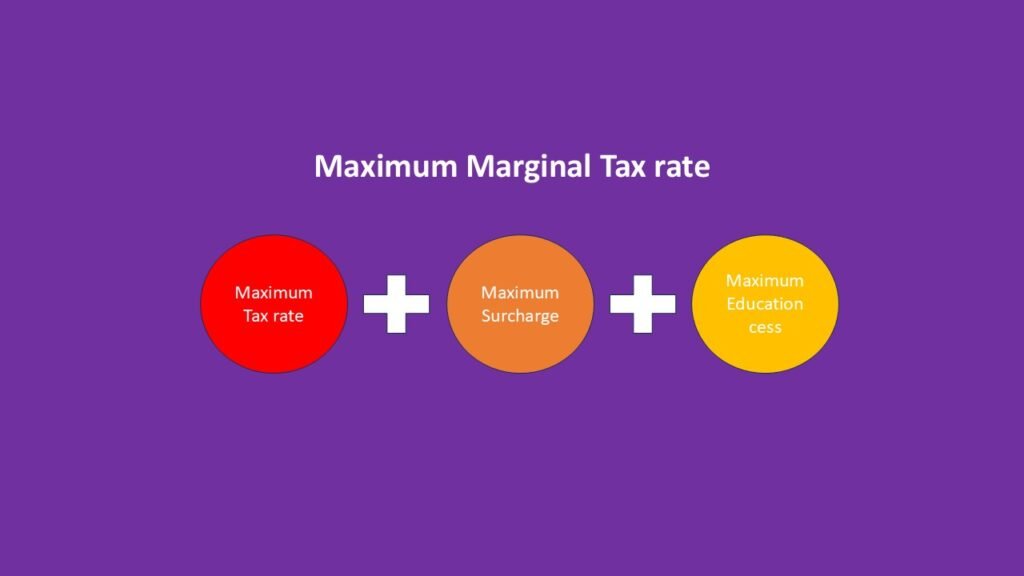In the recent order by Hon’ble Income Tax Appellate Tribunal, Mumbai bench (‘the ITAT’), it was held that while computing the income tax at maximum marginal rate (‘MMR’) for discretionary trust, maximum surcharge shall be considered.
The assessee is a private discretionary trust, liable to pay income tax at MMR. For AY 2022-23, it had declared income at INR 55,75,700/-. While computing the tax liability on the taxable income, the assessee had computed surcharge at 10% (INR 1,67,271) of tax as based on the slab rate of income, i.e. 10% surcharge where income exceeds INR 50,00,000 but does not exceed INR 1 crore).
The assessee’s return was processed under Section 143(1) of the Income tax Act, 1961 (‘the Act’) determining the total tax liability of INR 16,72,271/-, wherein the surcharge was computed @ 37% (i.e. INR 6,18,903/-) of base tax liability by the Central Processing Centre (‘CPC’).
Assessee contested that the MMR is to be taken for computation of base tax rate only and for computation of surcharge on such base tax rate, same shall be levied as per the slab of the income offered by the assessee. The assessee also objected that the Assessing Officer cannot recompute the rate of income tax or the rate of surcharge in an intimation u/s.143(1) of the Act
Upon filling an appeal to CIT(A), the contention of the assessee was rejected.
Hon’ble ITAT referred to section 2(29C) of the Act which defines MMR to mean the rate of income-tax (including surcharge on income-tax, if any) applicable in relation to the highest slab of income in the case of an individual as specified in the Finance Act of the relevant year. Accordingly, ITAT confirmed the CIT(A) order upholding that MMR is to be arrived at by taking highest slab of income-tax and highest rate of surcharge applicable in case of an individual. It mentioned that if the surcharge was to be levied according to the slab rate of the assessee, it was not required to be mentioned in section 2(29C).
ITAT also observed that the Policy of Law as suggested in Section 2(29C) of the Act is to discourage discretionary trust by charging the income of such trust in the hands of the trustee at the maximum marginal rate except in certain specified situation. It further stated that such a policy would be defeated, if it was held that the beneficiary of a trust would be chargeable to tax and also surcharge at the highest slab, but the assessee trust is charged to tax at the highest slab but lower rate of surcharge.
The levy of MMR on trust is a specific anti-avoidance rule and thus, should be given a strict interpretation.
In arriving at its decision, the Hon’ble ITAT also relied upon the commentary on Income Tax by Chaturvedi and Pithisaria as well as of the book published by Mr.Vinod Singhania and drew support from the decision of the Hon’ble Supreme Court and Hon’ble High Courts in the case of Gosar Family Trust2 and J K Holdings3. The said decisions are contrary to the decisions of Hyderabad Benches of ITAT in the case of Tayal Sales Corporation4 and Sriram Trust5, however, the ITAT held that these decisions had not considered the decision of the Supreme Court and Hon’ble High Courts and authoritative commentaries.
Further, the ITAT also concluded that CPC has power to compute the correct amount of tax and sum payable by the assessee in terms of provisions of Section 143(1)(b) and (c) of the Act.
______________________________
1 Aradhya Jain Trust vs. ITO [ITA No. 2197/Mum/2024]
2 [1995] 81 Taxman 146 (SC)[28-04-1995]
3 [2003] 133 Taxman 443 (Bombay)
4 [2003] 1 SOT 579 (HYD.)
5 ITA 439 / Hyd/ 2024
For detailed discussion on the above case law, please feel free to contact devadhaantu@devadhaantu.in
